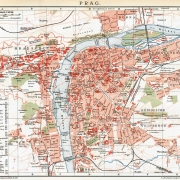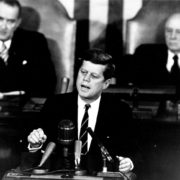How did Thailand advance its economy?
Understanding the ‘Land of Smiles’
To comprehend the vast landscape of Thailand’s economic development, it is important to organise the assessment by time periods, lasting from 1938 to 1997. In general, the economic development was largely guided by strong government intervention. Under the guidance of the government, different sectors were being developed, starting with agriculture, followed by industry and tertiary aspects (like tourism).
Topic of Study [For H2 History Students]:
Paper 2: Economic Development after Independence
Section B: Essay Writing
Theme II Chapter 1: Paths to Economic Development
1938 to 1957: Development of domestic capabilities
One of the central government policies, while under Phibun’s rule, was nationalization. Before the Siamese revolution of 1932, the economy was heavily guided by foreign investments from Western colonial powers, like the British. For instance, the government nationalized the British-American Tobacco Company. The Tobacco Act also restricted foreign participation in critical sectors. Over time, such policies allowed the locals to restore economic control in these areas.
In addition, the government formed the National Economic Development Corporation (NEDCOL) in 1954 to promote state-led industrialization. The Industrial Promotion Act provided tax exemption to encourage the participation of local manufacturers. As such, the protection of domestic firms from foreign competition gave them time to grow, thus contributing to economic growth.
1957 to 1980: Outward Expansion and Industrialization
Although Phibun was successful in achieving economic nationalism to undergo resource consolidation, the strong reliance on primary exports limited the extent of growth. Hence, the subsequent political leaders in this time period explored other options, particularly export-led industrialization.
The NEDCOL was reformed into the National Economic and Social Development Board (NESDB) in 1950. The government formulated several plans to enhance the growth of Thailand. One notable target was the promotion of foreign investment. As such, the government established the Board of Investment (BOI) in 1959. Then, the Promotion of Investment Act was passed to provide various incentives for foreign investors to finance the industrialization process. For example, tax exemptions were granted to firms that imported raw materials for production.
Additionally, the government tapped on the favourable international climate, seen in terms of the Green Revolution (mid-1960s), to enhance the growth of the agriculture sector. The government introduced high-yielding and disease-resistant varieties (IR-8) to raise the output effectively. More importantly, diversification of crops helped to expand the sources of growth. For example, the farmers grew not only rice, but also rubber and maize.
Therefore, these policies have benefited the economy. The inflow of foreign investment was critical in financing the local projects, thus contributing to the development of infrastructure. Also, diversification proved to be an astute decision as the country grew as a result of multiple sectors.
1980 to 1997: Financial Liberalization and Tourism
Following the Crisis Decades, which saw a slight dip in the growth by the mid-1980s, the Thai government pursued export-led growth to sustain the economic development. To achieve this, there was strong emphasis on financial liberalization to attract the essential foreign investment and propel growth.
One of the most significant policies involved the establishment of the Bangkok International Banking Facility (BIBF), which provided tax incentives to numerous banks. As such, this enhanced credit access for exporters.
Besides, from the late 1980s to 1997, the Thai government nurtured the growth of the tourism sector through the support from private entities. The private firms were given more control in the provision of tourist-related services. As a result, the economy benefited from a surge in inflow of foreign currencies.
Nevertheless, it is important to consider the drawbacks of financial liberalization as it left Thailand vulnerable to speculative attacks in the 1990s, which culminated in the disastrous Asian Financial Crisis of 1997.
Concluding remarks
In retrospect, the Thai government played a crucial role in contributing to the growth of various sectors, starting with agriculture. Over time, the government also provided opportunities for the private businesses to play a larger role by the 1980s and 1990s.
What can we learn from this case study?
Consider the following questions to understand this country-specific case study:
– ‘Industrialization was the most crucial feature that explained the growth of the Thai economy.’ Discuss. [to be discussed in class]
After examining this country-specific case study, it is important for you to apply this knowledge to essay questions. Join our JC History Tuition as we teach you to form logical and well-analyzed arguments effectively. Also, we provide useful summary notes and outlines to raise the productivity of revision sessions.
The H2 and H1 History Tuition feature online discussion and writing practices to enhance your knowledge application skills. Get useful study notes and clarify your doubts on the subject with the tutor. You can also follow our Telegram Channel to get useful updates.
We have other JC tuition classes, such as JC Math Tuition and JC Chemistry Tuition. For Secondary Tuition, we provide Secondary English Tuition, Secondary Math tuition, Secondary Chemistry Tuition, Social Studies Tuition, Geography, History Tuition and Secondary Economics Tuition. For Primary Tuition, we have Primary English, Math and Science Tuition. Call 9658 5789 to find out more.











